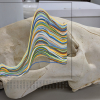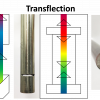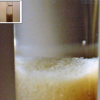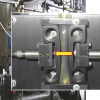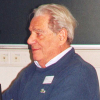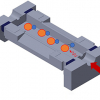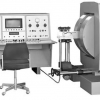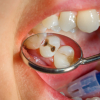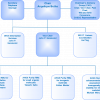Articles and Columns
A fascinating update on Brillouin spectroscopy, in particular “Brillouin microspectroscopy: in search of the mechanical properties in biological systems well below a wavenumber”. They show that the Brillouin measured elastic modulus clearly varies between regions of a biological sample, even if sometimes only by small amounts. Exactly what this is telling us and for what it is most useful or relevant is currently an area of active debate and remains to be seen.
This article provides a valuable summary of the choice of sample clean-up methods available for the quantification of small molecules in body fluids. What are the key factors? Judy outlines the principal processing methods and provides practical advice on protocol development using quantification of serum testosterone in serum samples as the model compound.
Knowledge of the origin of bones has applications in anthropology, archaeology and forensics; NIR spectroscopy, even with handheld instruments, is showing promise in being able to differentiate bones from different species.
The authors tell us about an initiative to promote analytical spectroscopy to a range of people from school children and their parents to Dutch chemists. PAT is the key.
This column completes the tale of two fictional laboratories both facing the issue: “How can the Theory of Sampling (TOS) help the commercial laboratory to improve its reputation and to increase its business”?
Peter Jenks is thinking about the new definition of the kilo, and other SI units, in “The kilo, the mole and the commutability of a result to activity”. However, he is more concerned with maintaining accurate laboratory measurements over time, which is crucial to making data comparable.
Spectroscopy is widely used in forensics, but the determination of the age of documents was one application I had not considered. With a huge variety of papers and inks available, each with their own ageing profiles, and with such ageing depending on environmental factors, the determination of the age of a document is not straightforward. However, infrared spectroscopy and chemometrics may have the answer.
Jacques Thierie’s article raises a seemingly impossible observation: that in some cases, transparency can exceed 100 %.
Tony raises the question of whether those implementing change consider sufficiently the effects on those who need to implement it or who will be affected by it. I am sure that this has wider implications than just in industry and business.
Kim Esbensen challenges commercial laboratories to add primary sampling to their range of responsibilities. Kim’s “tale” of two fictional laboratories should certainly provoke some comment, and concludes in the next issue.
Peter Jenks makes a welcome return to the Quality Matters Column and raises the radical idea of secondary producers of certified reference materials paying for the use of the primary CRMs. How may this affect the supply and price of secondary CRMs?
The story of Pierre Gy, who founded the Theory of Sampling (TOS), is a remarkable one, and his work is still the basis of representative sampling today.
Nick Polfer gives an excellent introduction to the recent technique of infrared ion spectroscopy. Ions held in the ion trap of a mass spectrometer can be probed with a tuneable light source, and its photodissociation studied as a function of the photon frequency. Nick believes that the technique will make an impact in small molecule analysis, such as metabolites, drugs and classes of molecules containing many isomers.
Clemens Anklin gives a short history of the commercial and technical development of NMR. From the first measurement of nuclear spin in 1937 by Rabi and his 1943 Nobel Prize to recent developments in small NMR spectrometers and instrument company changes.
FAIR, which stands for Findable, Accessible, Interoperable, Reusable, is an essential framework for the future of analytical data. Tony has taken the opportunity of a recent conference in Amsterdam to update readers on FAIR and how it affects spectroscopic data.
The last sampling columns have focused on the advantages the Theory of Sampling (TOS) can bring to companies, producers and manufacturers significantly reducing costs due to inferior sampling, and maximising efficiency and logistics. Here instead we take a look at sampling from the point of view of buyers, consumers and from a broader societal perspective, exploring the economic benefits and other advantages (e.g. transparency) that can be obtained through proper sampling. We address the point of view of the ultimate users and beneficiaries of TOS, on the market place or elsewhere. We are going to explore the other side of the coin, the one linked to the ethical and moral obligations that pertain to decision-makers of responsible public and governmental bodies, which indeed should apply equally also to producers and manufacturing companies.
This column explores the initial results extracted from the survey in the last issue into the training the next generation of colleagues currently receives in analytical chemistry.
In this work we demonstrate the suitability of confocal Raman microscopy for the characterisation of carious dental tissues. Samples of enamel and dentine, presenting carious lesions in different stages of progression, were evaluated by comparing the depolarisation ratio of the PO43– symmetric stretching band at 959 cm–1 in the different tissues. Both line and area scans were performed to gauge these variations. Moreover, the obtained results were compared with the tissues’ behaviour when interacting with ultraviolet radiation, namely the induced fluorescence in some tissues. The depolarisation ratio has proven to be a valuable tool in recognition of demineralisation of both enamel and dentine due to caries. The analyses of the collagen bands in the dentine sample turned out to be more difficult to evaluate due to high fluorescence in the carious region.
Pentti Minkkinen and Kim Esbensen present case histories and examples all focusing on the potential for economic loss or gain—by following, or more importantly, by not following TOS.
John Hammond updates us on news from the latest ISO/REMCO meeting and implementation of the new 17000 series standards.



